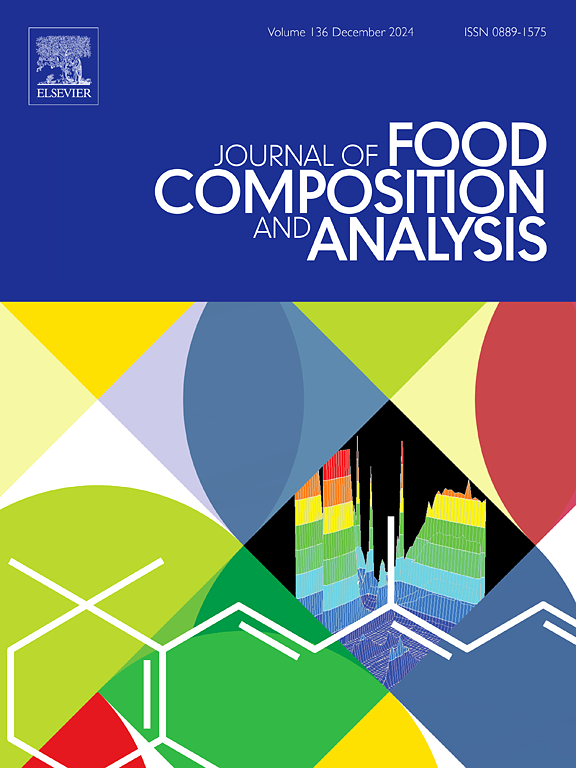Development of a NiMn2O4@Fe3O4 nanocomposite-based dispersive solid phase extraction for the accurate and sensitive determination of lead in mint tea samples prior to flame atomic absorption spectrometer measurement
IF 4
2区 农林科学
Q2 CHEMISTRY, APPLIED
引用次数: 0
Abstract
In this study, NiMn2O4@Fe3O4 nanocomposite was synthesized and utilized as an adsorbent for the preconcentration/extraction of lead prior to its determination by flame atomic absorption spectrometry. Comprehensive optimization studies were carried out univariately to enhance the extraction and recovery efficiency of the lead ions. The developed dispersive solid phase extraction method sought to minimize the use of extraction solvents. In this study, the limit of detection was presented as 15 µg/kg and LDR was between 30 – 964 µg/kg. The relative standard deviation (%RSD) values were found to be within the range of 8.3–12.12. The recovery experiments were performed in mint tea samples, and the percent recovery values were calculated within the range of 91.7 – 108 and 65.8 – 111 for the matrix-matched calibration strategy and external calibration, respectively. Precise and accurate determination of lead ions was achieved by applying the developed NiMn2O4@Fe3O4 nanocomposite-based dSPE-FAAS method.
求助全文
约1分钟内获得全文
求助全文
来源期刊

Journal of Food Composition and Analysis
工程技术-食品科技
CiteScore
6.20
自引率
11.60%
发文量
601
审稿时长
53 days
期刊介绍:
The Journal of Food Composition and Analysis publishes manuscripts on scientific aspects of data on the chemical composition of human foods, with particular emphasis on actual data on composition of foods; analytical methods; studies on the manipulation, storage, distribution and use of food composition data; and studies on the statistics, use and distribution of such data and data systems. The Journal''s basis is nutrient composition, with increasing emphasis on bioactive non-nutrient and anti-nutrient components. Papers must provide sufficient description of the food samples, analytical methods, quality control procedures and statistical treatments of the data to permit the end users of the food composition data to evaluate the appropriateness of such data in their projects.
The Journal does not publish papers on: microbiological compounds; sensory quality; aromatics/volatiles in food and wine; essential oils; organoleptic characteristics of food; physical properties; or clinical papers and pharmacology-related papers.
 求助内容:
求助内容: 应助结果提醒方式:
应助结果提醒方式:


